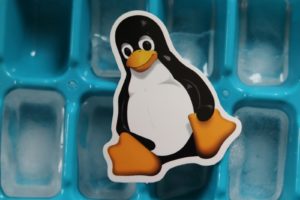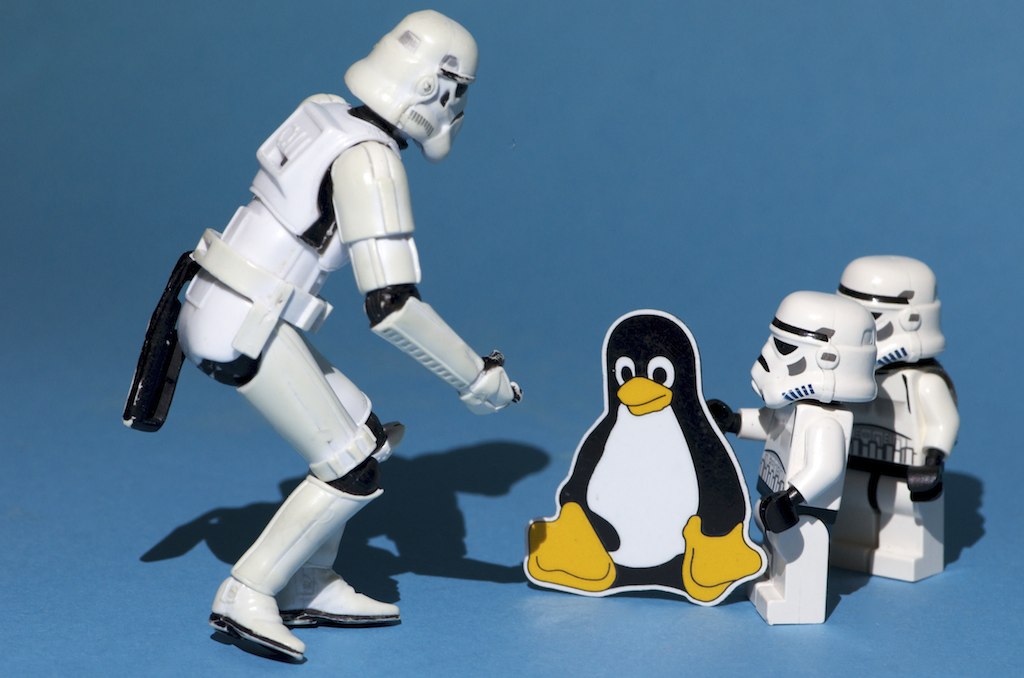# Introduction to Linux: Revolutionizing Computing Across the Globe
Linux, an operating system that emerged in the early 1990s thanks to Linus Torvalds, has grown from a hobbyist’s project to a powerhouse that drives much of today’s technology infrastructure. Unlike proprietary operating systems like Windows or macOS, Linux is open-source, meaning its source code is freely available for anyone to view, modify, and distribute. This fundamental difference has allowed Linux to permeate through various sectors, from powering servers and supercomputers to running on smartphones and home appliances.
The global reach of Linux is undeniable. It powers over 96% of the top 1 million servers and is the backbone of over 70% of all smartphones in the form of Android. Its adaptability and robustness have made it a favorite among technology giants like Google, Amazon, and Facebook, who rely on its stability to manage vast amounts of data and high-speed transactions.
Linux’s impact on computing can be seen in its ability to scale from massive computational clusters to individual IoT devices. Its versatility makes it a preferred choice for developers and corporations alike, fostering a technology ecosystem that values efficiency, customization, and open collaboration.
The growth of Linux is also a testament to the power of community-driven projects. Its development is not controlled by a single entity but is the result of contributions from thousands of professionals and enthusiasts around the globe. This collaborative approach has accelerated innovation and helped maintain a secure, robust operating environment.
# Core Features of Linux: What Sets It Apart from Other Operating Systems
Linux distinguishes itself through several core features that enhance its appeal over other operating systems. Firstly, its multitasking, multi-user capabilities allow numerous processes to run simultaneously without compromising system stability. This is crucial for servers and systems requiring high availability and performance.
Secondly, Linux’s kernel modularity allows users to customize the kernel to suit specific needs. This can range from stripping down unnecessary components for embedded systems to adding patches that enhance security or functionality for enterprise systems.
Linux also boasts extensive hardware support, thanks to its widespread use and community contributions. Whether it’s legacy hardware or the latest high-performance processors, Linux likely supports it, often out of the box. This broad compatibility reduces costs and extends the lifecycle of hardware investments.
File system support is another area where Linux excels. It supports a wide range of file systems, including but not limited to Ext4, XFS, and Btrfs, allowing users to choose the most appropriate file system based on performance, reliability, or features like snapshotting and volume management.
The shell scripting and automation capabilities of Linux are unmatched. The powerful command-line interface (CLI) allows for complex operations to be scripted and automated, making repetitive tasks more efficient and less prone to human error.
Security features in Linux are robust, with built-in tools like SELinux and AppArmor offering advanced access control mechanisms. These tools help in enforcing strict security policies, crucial for maintaining system integrity in multi-user environments.
Lastly, the package management systems in various Linux distributions simplify software installation and maintenance. Systems like APT, YUM, and Zypper provide automated software updates, dependency management, and comprehensive package repositories.
# Unparalleled Flexibility: Customizing Linux for Personal and Professional Use
One of Linux’s most celebrated features is its unparalleled flexibility, which allows it to be customized for any application. From minimalistic installations for old hardware to feature-rich setups for modern desktops, Linux’s configurability is a key advantage.
For personal use, individuals can choose from a variety of distributions (distros) like Ubuntu, Fedora, or Mint, which come with different sets of pre-installed software and desktop environments. This means users can select a distro that matches their specific aesthetic preferences or performance requirements.
Professionals, on the other hand, might opt for distributions like CentOS, Debian, or Red Hat Enterprise Linux, which offer long-term support, stability, and comprehensive security features. These characteristics are essential for business environments where downtime or security breaches can have significant repercussions.
Linux’s flexibility extends to its graphical environments as well. Unlike other operating systems that offer a single graphical user interface (GUI), Linux provides numerous desktop environments like GNOME, KDE, and XFCE. Each of these can be further customized with themes, icons, and extensions to suit individual workflows and aesthetics.
The ability to customize doesn’t stop at the user interface. Linux users can compile their own kernels, stripping unnecessary drivers and features to optimize performance or compliance with specific security policies. This level of customization is particularly valuable in specialized fields like embedded systems or high-performance computing.
Linux also supports a variety of programming languages natively. This makes it an ideal platform for software development, allowing developers to work in the language they are most comfortable with or that best suits the task at hand.
For those interested in network security and penetration testing, distributions like Kali Linux come equipped with a suite of tools specifically for this purpose. This specialization showcases Linux’s adaptability and how it can be molded to fit very niche but critically important roles.
# The Power of Open Source: Community, Collaboration, and Innovation
The open-source nature of Linux is perhaps its most defining characteristic. Unlike proprietary software, where the source code is closely guarded, the source code of Linux is available for anyone to inspect, modify, and enhance. This transparency fosters a high degree of trust and collaboration among its users and developers.
The collaborative environment of Linux has led to a culture of innovation and rapid problem-solving. Issues and bugs are quickly identified and fixed by the community, often long before they can become significant problems. This community-driven approach ensures that the system evolves much faster than it could under a more closed development model.
Contributions to Linux come from all corners of the globe and all walks of life, ranging from individual hobbyists to large corporations. Companies like IBM, Google, and Intel, among others, contribute to the Linux kernel, ensuring that it remains cutting-edge and stable. This wide base of contributors ensures a diversity of thought and innovation that is hard to match.
The open-source model also allows for a unique educational opportunity. Students, professionals, and hobbyists can all learn from real-world code that powers millions of machines. Linux’s source code serves as an invaluable educational tool for those looking to understand operating systems at a fundamental level.
Moreover, the success of Linux has spurred the growth of other open-source projects. Tools like Apache, MySQL, and PHP, which often run on Linux servers, have benefited from the same collaborative and transparent development model.
The open-source ethos extends beyond software development into areas like digital rights management, privacy, and freedom of speech. Linux and its community often stand at the forefront of these issues, advocating for policies and practices that keep the internet and its users free and secure.
# Security and Stability: Why Linux Is the Backbone of Many Enterprises
Security and stability are paramount in enterprise environments where data breaches or downtime can result in significant financial losses or damage to reputation. Linux’s architecture and community-driven development model contribute significantly to its robust security posture.
The Linux kernel, being open-source, undergoes continuous scrutiny from a global community of developers and security experts. This widespread review helps in identifying and patching vulnerabilities much quicker than in a closed-source environment.
Linux distributions offer advanced security features like SELinux (Security Enhanced Linux), which provides mechanisms for supporting access control security policies. This includes mandatory access controls (MAC), which are not typically available in many other operating systems.
The stability of Linux is evidenced by its dominance in the server market, where uptime is critical. Many of the world’s top websites and internet-facing services rely on Linux to maintain continuous availability. The ability to apply updates and patches without rebooting, or at least minimizing downtime, is a significant advantage in maintaining such stability.
Linux’s package management systems contribute to its security by facilitating easy updates and patches. These systems ensure that software dependencies are resolved automatically, reducing the risk of software conflicts that could lead to system instability.
For enterprises concerned with maintaining compliance with various regulatory standards, Linux offers comprehensive logging and auditing systems. These systems help in tracking user activities and system changes, providing an audit trail that can be crucial for forensic analysis and compliance reporting.
Moreover, the minimalistic nature of Linux installations can be tailored to reduce potential attack surfaces by removing unnecessary components. This customization capability allows system administrators to fine-tune security settings in accordance with their specific operational requirements.
# Linux in Various Sectors: From Servers to Smartphones
Linux’s versatility allows it to serve a wide range of industries. In the server domain, it is the preferred choice for running web servers, database servers, and cloud infrastructure. Major public cloud platforms like Amazon Web Services, Google Cloud Platform, and Microsoft Azure utilize Linux extensively for their operations.
In the realm of supercomputing, Linux dominates by powering all of the top 500 supercomputers in the world. The reasons for this are manifold, including its scalability, robustness, and ability to be customized for specific performance needs.
The telecommunications sector also relies heavily on Linux, particularly with the rise of technologies like 5G and IoT. Linux-based operating systems, due to their stability and scalability, are ideal for managing the high data throughput and connectivity requirements of modern telecom infrastructures.
On the consumer front, Linux has made significant inroads into the smartphone market through Android, which is based on the Linux kernel. This has brought Linux to billions of users worldwide, many of whom may not even be aware that they are using a Linux-powered device.
Linux is also prevalent in the automotive industry, particularly with the rise of electric and autonomous vehicles. Automotive Grade Linux, a collaborative open-source project, aims to bring Linux-based systems into vehicles to handle everything from infotainment systems to control mechanisms.
In the realm of embedded systems, Linux’s modularity and configurability make it an excellent choice for devices like routers, smart TVs, and smart home devices. Its ability to run on hardware with limited resources while providing a stable and secure environment is invaluable in these applications.
# The Passionate Linux Community: Support, Education, and Development
The Linux community is a vibrant and diverse group of users and developers that plays a crucial role in the ecosystem. This community not only contributes code but also provides support, shares knowledge, and fosters innovation.
Community forums, mailing lists, and IRC channels are bustling with activity, where newcomers can seek help and advice from experienced users. This supportive environment helps in lowering the barrier to entry for new users.
Linux user groups (LUGs) and conferences like FOSDEM or the Linux Foundation events provide opportunities for face-to-face interactions, networking, and collaboration. These gatherings help in strengthening community bonds and fostering a sense of belonging among members.
Educational initiatives by the community are also significant. There are numerous resources available for free, from detailed tutorials and courses on platforms like edX and Coursera to vast amounts of informal content such as blogs, YouTube channels, and podcasts.
The community also plays a critical role in the governance of Linux. For instance, the Linux kernel’s development is overseen by a network of trusted lieutenants and ultimately by Linus Torvalds himself, but it relies on community input and patches for its evolution.
This community-driven model extends to the development of various distributions. Each major Linux distribution has its own community and governance model, tailored to the specific nature of the distribution’s goals and user base.
# The Future of Linux: Trends, Predictions, and Emerging Technologies
The future of Linux is as dynamic as its present. With trends like containerization, microservices, and edge computing on the rise, Linux is well-positioned to remain at the forefront of these technologies. The development of tools like Docker and Kubernetes, which are built on and for Linux, underscores the operating system’s pivotal role in modern software architecture.
The increasing concern over privacy and data sovereignty might drive more users towards Linux, as it offers greater control over what software is installed and how data is managed compared to proprietary systems.
In the realm of artificial intelligence and machine learning, Linux is likely to continue as a preferred platform due to its robustness, scalability, and extensive support for programming languages and libraries that are staples in AI development.
The push towards open-source could see Linux making greater inroads into areas traditionally dominated by proprietary systems, such as desktops and laptops for general consumers. With initiatives like the Linux Foundation’s Project Harmony, there is a concerted effort to enhance the usability and appeal of Linux to a broader audience.
Emerging technologies such as quantum computing also present a new frontier for Linux. As these technologies develop, the adaptability and openness of Linux could make it an ideal platform for exploring and exploiting the capabilities of quantum computing.
In conclusion, Linux’s journey from a hobbyist’s project to a cornerstone of modern computing is a testament to the power of open-source software. Its features, flexibility, and the passionate community around it not only make it unique but also ensure that it will continue to play a crucial role in shaping the future of technology.
Discover more from Rune Slettebakken
Subscribe to get the latest posts sent to your email.


